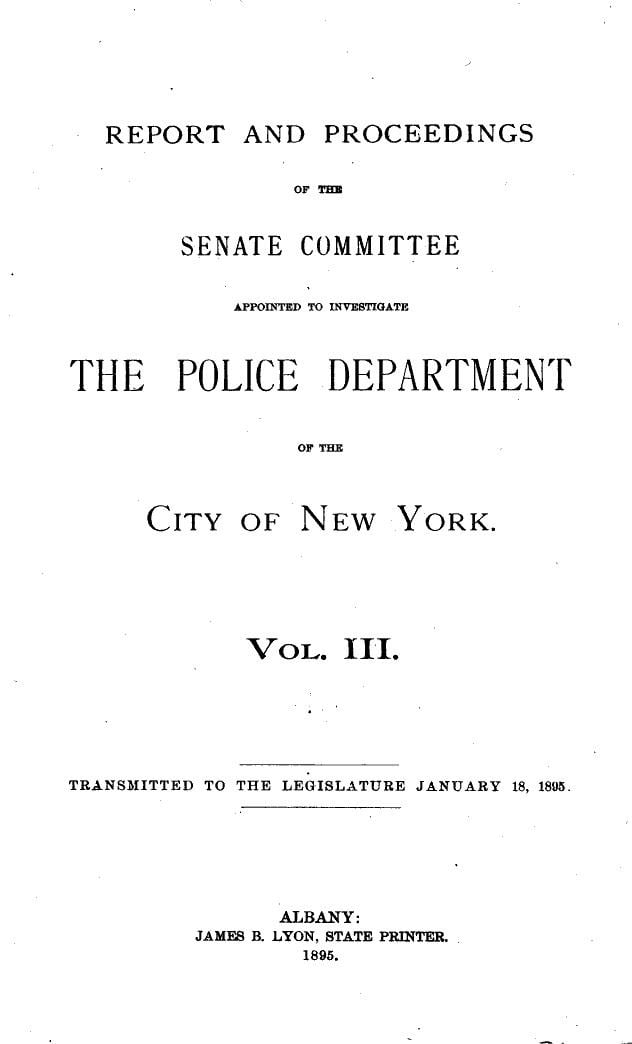 | ||
Lexow Committee (1894 to 1895), is the name given to a major New York State Senate probe into police corruption in New York City. The Lexow Committee inquiry, which took its name from the Committee's chairman, State Senator Clarence Lexow, was the widest-ranging of several such commissions empaneled during the 19th century. The testimony collected during its hearings ran to over 10,000 pages and the resultant scandal played a major part in the defeat of Tammany Hall in the elections of 1894 and the election of the reform administration of Mayor William L. Strong. The investigations were initiated by pressure from Charles Henry Parkhurst.
Contents
Police
Robert C. Kennedy writes:
The Lexow Committee, ironically headquartered at the Tweed Courthouse on Chambers Street, examined evidence from Parkhurst's City Vigilance League, as well as undertook its own investigations. The Lexow Committee uncovered police involvement in extortion, bribery, counterfeiting, voter intimidation, election fraud, brutality, and scams. Attention focused on [William] Devery, then a police captain, who stonewalled before the committee by only responding vaguely to questions: "touchin' on and appertainin' to that matter, I disremember." The state probe and Devery's impudent testimony prodded the police commissioners to clean house. Charged with accepting bribes, Devery feigned illness and his case never reached trial, although he was temporarily demoted.
